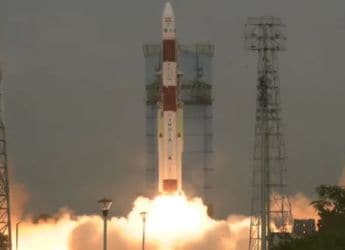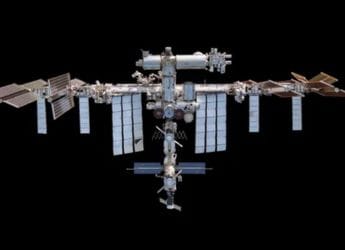- Home
- Science
- Science News
- MIT Engineers Test Idea to Keep Rovers Hovering in Air Using Moon’s Natural Charge
MIT Engineers Test Idea to Keep Rovers Hovering in Air Using Moon’s Natural Charge
The concept is based on the proven theory that similarly charged surfaces can repel each other, and this would help the glider remain in air.

Photo Credit: MIT News
The theory could help rovers float one metre above the ground
Aerospace engineers are always looking for newer ways to support their experiments on extra-terrestrial bodies like the Moon and asteroids. One of the main impediments to their work is the lack of energy sources to continue using an equipment for a longer duration. So, MIT researchers are trying a new concept to harness the Moon's natural charge to keep hovering rovers in the air. In the absence of an atmosphere, the Moon and asteroids build an electric field through direct exposure to the Sun. On the Moon, this strong surface charge can levitate dust more than one metre above the ground.
This works in the same way as static electricity causes the human hair to stand.
Engineers working at NASA and other such space agencies have recently proposed to harness the Moon's natural charge to levitate a glider, whose wings would be built with Mylar, which holds the same charge as surfaces on airless bodies. Their concept is based on the proven theory that similarly charged surfaces can repel each other, and this would help the glider remain in the air.
But there's one problem: a larger planetary body would have a stronger gravitational pull that could act as a counteracting force and crash the glider.
To overcome this problem, MIT engineers have thought of using tiny ion beams to increase the vehicle's charge and also boost the surface's repelling charge. They have done an initial feasibility study and built a retro-style, disc-shaped flying saucer. The study, published in the Journal of Spacecraft and Rockets, concluded that the ion boost should be strong enough to levitate a two-pound object on the Moon and Moon-like asteroids.
“With a levitating rover, you don't have to worry about wheels or moving parts,” said Paulo Lozano, a co-author of the study. About the topography of an asteroid, Lozano said that it could be very uneven, but as long as there is a controlled system to keep the rover floating, it can travel over very harsh, uncharted areas without having to physically avoid the asteroid.
The engineers used thrusters to beam out positive ions to increase the surface's charge and levitate the glider off the ground. Their model predicted that a small rover, weighing two pounds, could lift off and hover one metre above the ground using a 10KV ion source on a large asteroid. But on the Moon, the same rover would need a 50KV source. This research was supported by NASA.
Catch the latest from the Consumer Electronics Show on Gadgets 360, at our CES 2026 hub.
Related Stories
- Samsung Galaxy Unpacked 2025
- ChatGPT
- Redmi Note 14 Pro+
- iPhone 16
- Apple Vision Pro
- Oneplus 12
- OnePlus Nord CE 3 Lite 5G
- iPhone 13
- Xiaomi 14 Pro
- Oppo Find N3
- Tecno Spark Go (2023)
- Realme V30
- Best Phones Under 25000
- Samsung Galaxy S24 Series
- Cryptocurrency
- iQoo 12
- Samsung Galaxy S24 Ultra
- Giottus
- Samsung Galaxy Z Flip 5
- Apple 'Scary Fast'
- Housefull 5
- GoPro Hero 12 Black Review
- Invincible Season 2
- JioGlass
- HD Ready TV
- Laptop Under 50000
- Smartwatch Under 10000
- Latest Mobile Phones
- Compare Phones
- Vivo Y500i
- OnePlus Turbo 6V
- OnePlus Turbo 6
- Itel Zeno 20 Max
- OPPO Reno 15 Pro Mini 5G
- Poco M8 Pro 5G
- Motorola Signature
- Vivo Y50e 5G
- Lenovo Yoga Slim 7x (2025)
- Lenovo Yoga Slim 7a
- Realme Pad 3
- OPPO Pad Air 5
- Xiaomi Watch 5
- Huawei Watch 10th Anniversary Edition
- Acerpure Nitro Z Series 100-inch QLED TV
- Samsung 43 Inch LED Ultra HD (4K) Smart TV (UA43UE81AFULXL)
- Asus ROG Ally
- Nintendo Switch Lite
- Haier 1.6 Ton 5 Star Inverter Split AC (HSU19G-MZAID5BN-INV)
- Haier 1.6 Ton 5 Star Inverter Split AC (HSU19G-MZAIM5BN-INV)

















